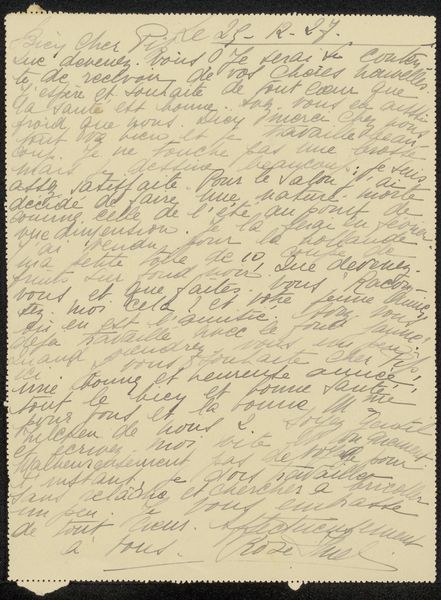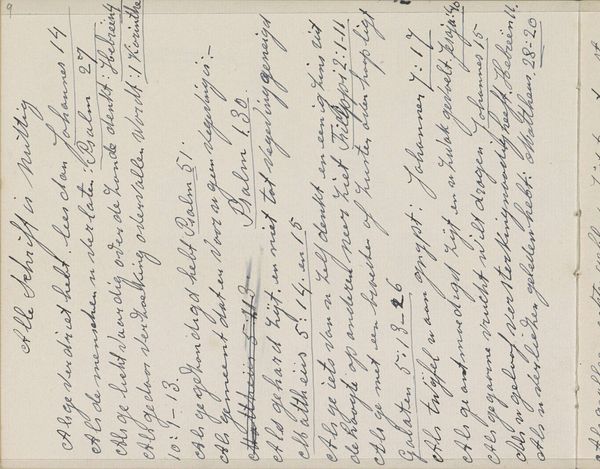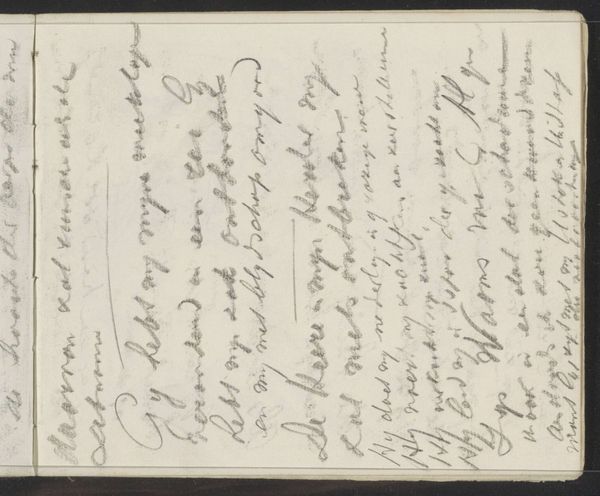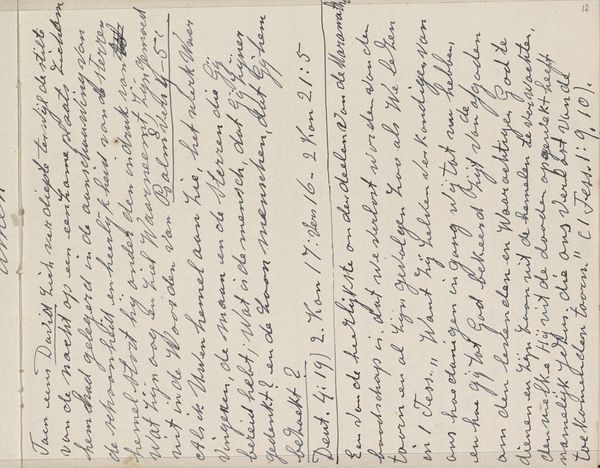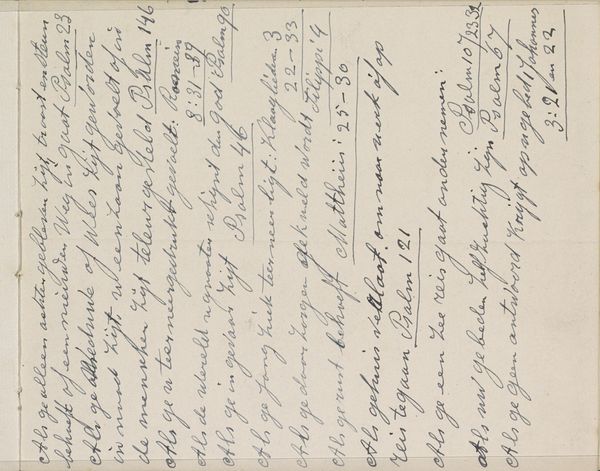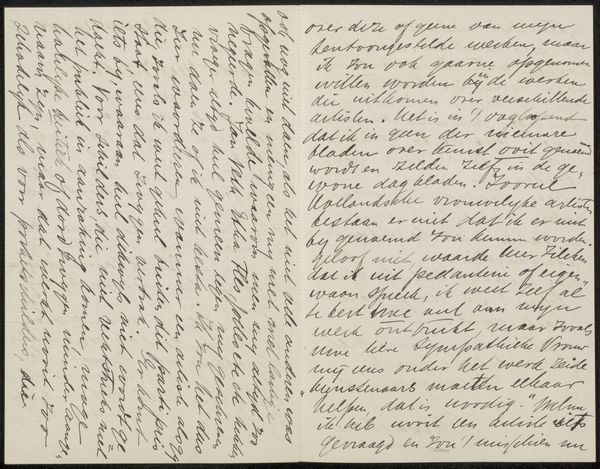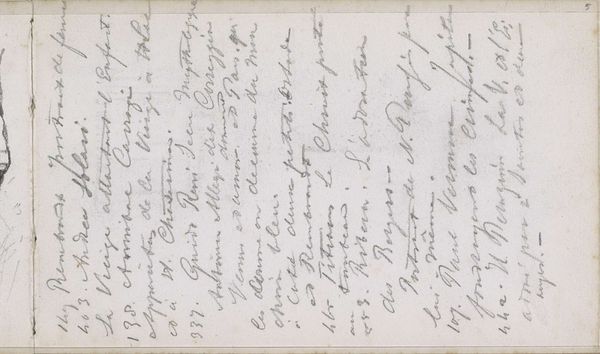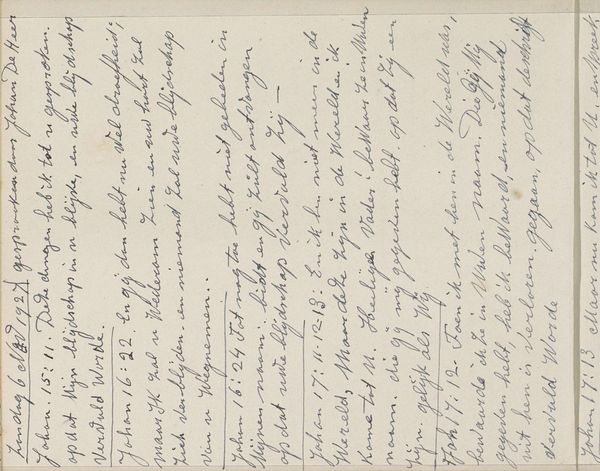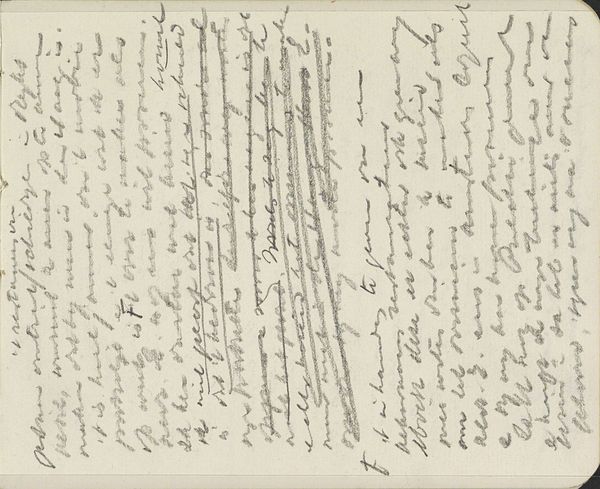
Prentbriefkaart aan jonkheer Hendrik Teding van Berkhout (1879-1969) Possibly 1912
0:00
0:00
drawing, paper, ink, pen
#
drawing
#
neat line work
#
hand drawn type
#
hand lettering
#
paper
#
ink line art
#
ink
#
hand-drawn typeface
#
pen-ink sketch
#
thin linework
#
pen work
#
pen
#
coloring book page
#
doodle art
#
calligraphy
Copyright: Rijks Museum: Open Domain
Curator: There’s a kind of haunting beauty in this… like a coded message from the past, all delicate swirls of ink. Editor: Precisely! This "Prentbriefkaart aan jonkheer Hendrik Teding van Berkhout (1879-1969)" translates to "Postcard to Jonkheer Hendrik Teding van Berkhout", and was created by Alphonse Stengelin, likely around 1912. It’s rendered in pen and ink on paper, with Stengelin's exquisite calligraphic style taking center stage. Curator: It feels very intimate, like uncovering someone’s private correspondence, filled with their unique language and script, where legibility is secondary to emotion. Are there hidden symbols in his script or its composition, perhaps personal metaphors? Editor: It reveals a network of relationships. The text discusses catalogue editions and corrections from the Musée de Lyon to "Cher Monsieur," in looping handwriting, as he points out corrections and also names those masters whose works the unnamed correspondent should also study: Laurent Fleury Chenu, Joseph Guichard and Nemorin Cabane. So, it’s an active engagement with the art world and its gatekeepers, a play within those institutions, don’t you think? Curator: Absolutely. He’s weaving himself into the art narrative. It also has a deeply tactile, personal quality that seems to disappear when art is primarily exchanged via modern media. Even in the choice of ink, is he subtly expressing identity, choosing the qualities that make him seem to resonate to cultural memory or emotional intent? Editor: Potentially. And look at the addition of the name underneath his signature and then “Soleil Levant” --or Rising Sun– is placed almost like a declaration of identity under his calling card, a public artistic presence. How did his patrons perceive him and this performative persona? I want to know more! Curator: It certainly compels you to delve into those unseen elements shaping it, and how his visual strategies create their own, unique history! Editor: Indeed, it highlights how art serves to negotiate, affirm, and shape connections. That is an aspect that resonates.
Comments
No comments
Be the first to comment and join the conversation on the ultimate creative platform.

